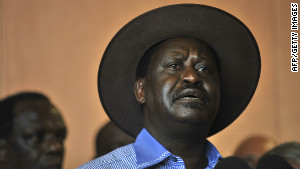July 30, 2012
NAIROBI — The Kenyan Red Cross says more than 30,000 refugees have entered the country from Ethiopia in the past few days to escape fighting in their own country, though the ethnic battles now seem to have been contained and the exodus has turned to a trickle.
The Kenyan Red Cross says the fighting was triggered by a dispute over land between the Garri and Borana ethnic communities in southern Ethiopia, about 1.5 kilometers from the Kenyan border.
The clashes, which started four days ago, have killed dozens and displaced tens of thousands to temporary camps in the town of Moyale on the Kenyan side of the border.
Nelly Muluka, Kenya Red Cross communication manager in Moyale, said the flow of refugees has slowed.
“We are not really receiving many people at the moment, but according to the Kenya Red Cross registration in the two camps, we have a figure of 33,000 people who have crossed from Ethiopia following the conflict,” said Muluka.
The Ethiopian government says the clashes were caused by administrative issues rather than land disputes. Government spokesman Bereket told the French news agency the federal police intervened and the situation is now under control.
Muluka said Ethiopian police are maintaining a heavy presence along the Ethiopian-Kenyan border. She said the Red Cross has distributed blankets, mosquito nets and food. Muluka said the refugees appear to be reluctant to go back to their villages.
“When talking to people they don’t seem to be in a hurry to go back because they say they have lost most of their properties, all they owned, to the conflict. Some of them even lost their relatives, and for that fear they don’t seem to be in a hurry,” said Muluka.
The area where the clashes erupted is in the Oromia region of southern Ethiopia. The area is frequented by pastoral communities who heavily rely on land for animal grazing.
The Kenyan Red Cross says the fighting was triggered by a dispute over land between the Garri and Borana ethnic communities in southern Ethiopia, about 1.5 kilometers from the Kenyan border.
The clashes, which started four days ago, have killed dozens and displaced tens of thousands to temporary camps in the town of Moyale on the Kenyan side of the border.
Nelly Muluka, Kenya Red Cross communication manager in Moyale, said the flow of refugees has slowed.
“We are not really receiving many people at the moment, but according to the Kenya Red Cross registration in the two camps, we have a figure of 33,000 people who have crossed from Ethiopia following the conflict,” said Muluka.
The Ethiopian government says the clashes were caused by administrative issues rather than land disputes. Government spokesman Bereket told the French news agency the federal police intervened and the situation is now under control.
Muluka said Ethiopian police are maintaining a heavy presence along the Ethiopian-Kenyan border. She said the Red Cross has distributed blankets, mosquito nets and food. Muluka said the refugees appear to be reluctant to go back to their villages.
“When talking to people they don’t seem to be in a hurry to go back because they say they have lost most of their properties, all they owned, to the conflict. Some of them even lost their relatives, and for that fear they don’t seem to be in a hurry,” said Muluka.
The area where the clashes erupted is in the Oromia region of southern Ethiopia. The area is frequented by pastoral communities who heavily rely on land for animal grazing.



